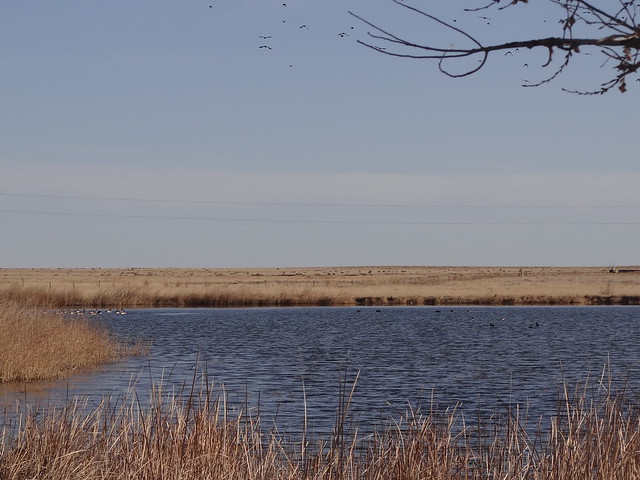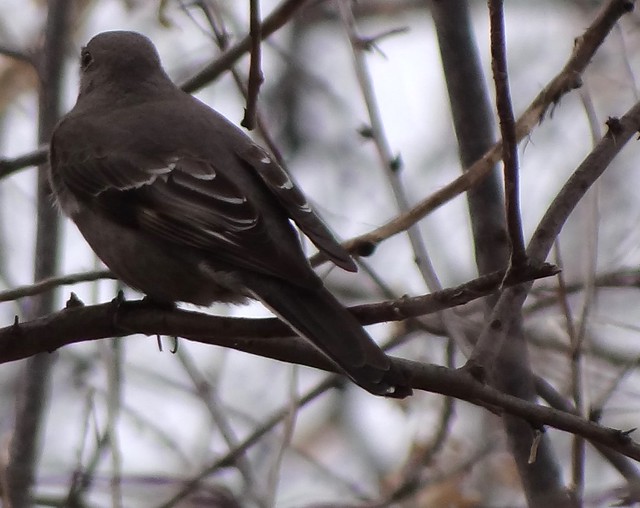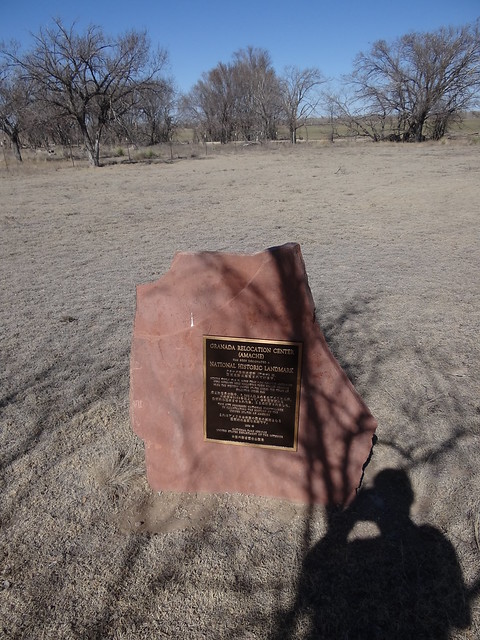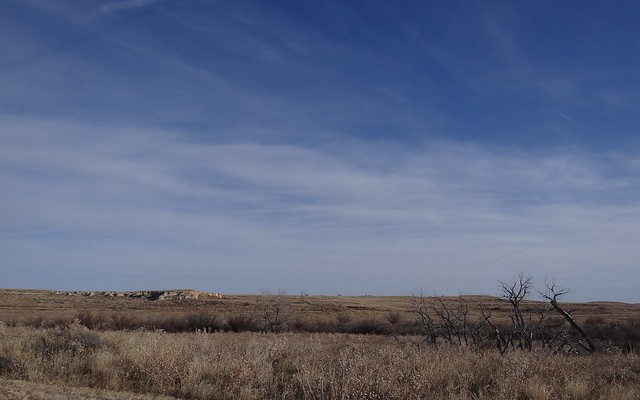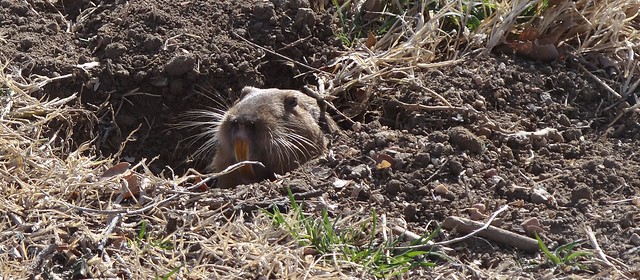I couldn’t have been more delighted to be asked to the Great Plains Snow Goose Festival this past weekend, in Lamar, Colorado.
Where?
I’ll confess that I had to open the atlas, too, but when I found out that Lamar was in southeastern Colorado, I was even more excited. I haven’t spent a huge amount of time anywhere in the state, with the high dry plains of the southeast by far the terra most incognita to me — at least until this weekend.
Ted, Hannah, and Andrew were waiting for me at the baggage claim when I got to Denver, and in just a few minutes we were on the highway headed south on a startlingly warm and dramatically windy afternoon.
I slept well and long in the “Fort Room” at Country Acres, probably to the crowing rooster’s frustration, then stepped outside to see the sun rise. An American kestrel was hunting behind the motel, while the parking lot out front was mastered by a different surveying falcon, one of several Richardson’s merlins that kept things exciting for birds and birders all weekend long.
The first field trip, a walk along the Willow Creek trail behind the community college, was well attended and a lot of fun; I was especially happy that Connie had come down for the day — we’ve been “e-friends” ever since she first wrote for me at Winging It, but had never managed to take to the field together.
The birds were every bit as good as the birders. Local Coloradans were happy to see northern cardinals, red-bellied woodpeckers, white-throated sparrows, eastern bluebirds, and eastern white-breasted nuthatches. The great looks and the birders’ enthusiasm made those birds more than special even for this easterner, but naturally I was drawn even more to the Oregon and pink-sided juncos, lesser goldfinches, and the Townsend’s solitaire perched low and close in the brush. A sharp-shinned hawk dropped in, too, no doubt enjoying the abundance of passerines as much as I was, if perhaps differently.
With a break of several hours until the next outing, a few of us simply stayed on Willow Creek, watching the season’s first mourning cloaks drift by while a Cooper’s hawk clucked and cackled from a branch above us, then took off into display flight with undertail fluffed and spread. The local great horned owls were invisible, but scattered pellets assured us that they were eating well. What was probably the same flock of pine siskins, with a few American and lesser goldfinches at the edges, buzzed us repeatedly.
The late afternoon walk was as much fun as the morning iteration, with many of the same birds putting on a show just as good. A different sharp-shinned hawk flashed over the trees in search of a meal, while two red-tailed hawks may have been more interested in scouting out a roosting site for the night to come.
The next morning started with a big breakfast at the Cow Palace before we all climbed into a minibus to look for raptors north and east of Lamar. I’m always a bit uneasy about raptor trips, but Pat had done as good a job of scouting as he did all morning of driving. We started off with a bang: the first of multiple ferruginous hawks, a northern shrike (with three for the weekend, nearly as common as loggerheads!), excellent close views of horned larks — the most abundant bird most people in North America have never seen.
Thurston Reservoir was paved with ducks, most of them redheads and gadwall; there were a few canvasbacks, wood ducks, and lesser scaup in the mix of fifteen species. The stunning cinnamon teal were probably the first arrivals of spring, and a bird I’d really been hoping to see.
A few scattered sandhill cranes had been standing on the pastures on the way in, but now, as it came time for their mid-morning loaf, small gangs began to fly in to the lakeshore. We checked every one for a black neck as they landed, legs a-dangle and wings a-tilt in the breeze.
But this was a raptor tour, and even at the reservoir the birds refused to let us forget it. There is apparently a harrier roost there: no fewer than nine birds came up out of the cattails to soar and glide together as the morning warmed. Our best views of ferruginous hawk — and we had many good views — were offered by a bird that blew in and circled right above our heads, certainly the highlight of the field trip and one of the most vivid memories I carried away from the entire weekend.
As we approached the Kansas border, raptors thinned out, though it was this segment of the trip that gave us, surprisingly, the only prairie falcon of the day. We ended at a sad and somber site, “Camp” Amache, where Americans imprisoned Americans in the 1940s.
After lunch it was time for a workshop I called “Bird-Shaped,” concentrating on how to make verbally explicit the impressions we form of the birds we see. After half an hour of slides and conversation, we retired to the parking lot, where mourning doves, Eurasian collared doves, and rock pigeons showed off their tail shapes, wing shapes, and flight habits. Thank goodness for the columbids!
After a fine banquet meal, it was time for a lecture. We talked about fishing in the sky, lives being saved by an island sparrow, and how you can get your own name attached to a goose you’ve already named for somebody else — the usual stuff. There was laughter at the right points.
And then, already, it was Sunday. The early morning was cooler than the days before, but as we moved north on our final birding ramble, the blue skies and warming temperatures made it easy once again to forget that it was February.
John Martin Reservoir was the location of my favorite mammal sighting of the weekend, a pocket gopher (sp.) working the sandy soil.
The water level was high and the dam road inaccessible, but we kept checking the gulls overhead. Finally a huge, barrel-chested white one appeared, soaring over dry prairie that I hope reminded this glaucous gull of its natal tundra. The birds that saw us off when it was time to move on were more at home in the habitat, I think: two greater roadrunners, my absolute “target birds” for the trip, ran and picked and poked and trotted along as we watched.
We kept moving, stopping at lakes and fields and puddles and pastures, listening to the moaning chorus of redheads and the frantic chucking of red-winged blackbirds on noticing a perched merlin. And then the lights of Denver and the airport, after a weekend when I finally got to know a new favorite place.
Birds
Greater white-front goose
snow goose
cackling goose
Canada goose
wood duck
gadwall
American wigeon
mallard
cinnamon teal
northern shoveler
northern pintail
green-winged teal
canvasback
redheda
ring-necked duck
lesser scaup
bufflehead
common goldeneye
hooded merganser
common merganser
scaled quail
wild turkey
pied-billed grebe
great blue heron
bald eagle
northern harrier
sharp-shinned hawk
Cooper’s hawk
red-tailed hawk
ferruginous hawk
American coot
sandhill crane
killdeer
ring-billed gull
herring gull
lesser black-backed gull
glaucous gull
rock pigeon
Eurasian collared-dove
mourning dove
greater roadrunner
great horned owl
red-bellied woodpecker
downy woodpecker
northern flicker
American kestrel
merlin
prairie falcon
loggerhead shrike
northern shrike
blue jay
black-billed magpie
American crow
horned lark
eastern white-breasted nuthatch
ruby-crowned kinglet
eastern bluebird
Townsend’s solitaire
American robin
European starling
cedar waxwing
Lapland longspur
myrtle warbler
Audubon’s warbler
American tree sparrow
song sparrow
white-throated sparrow
white-crowned sparrow
slate-colored junco
Oregon junco
pink-sided junco
northern cardinal
red-winged blackbird
western meadowlark
great-tailed grackle
house finch
pine siskin
lesser goldfinch
American goldfinch
house sparrow
Mammals
pocket gopher sp.
fox squirrel
black-tailed prairie-dog
desert cottontail
eastern cottontail
black-tailed jackrabbit
pronghorn
mule deer
white-tailed deer

